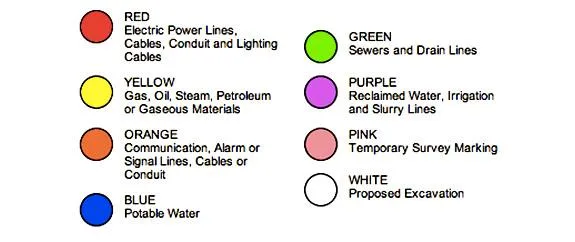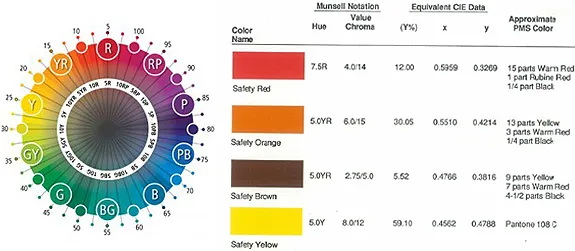Decoding The City: The Road Graffiti Placed by Utility Workers
These infrastructural lines mark the pathways of pipes and wires beneath the paved surface — but what does each color mean?
/https://tf-cmsv2-smithsonianmag-media.s3.amazonaws.com/filer/street-paint-388.jpg)
Cities around the world are covered in spray-painted hieroglyphics and cryptic designations scrawled on public surfaces; unintelligible tags and arcane signs intended to communicate messages to a specialized audience with a trained eye. Such markings are so prevalent that they just blend into the urban patina of dirt and disrepair and go largely unnoticed. I’m not talking about illegal graffiti. Rather, the officially sanctioned infrastructural “tagging” employed by public works departments around the country.
You’ve probably seen these markings on streets and sidewalks. Multi-colored lines, arrows and diamonds denoting the presence of some subterranean infrastructure or encode instruction for construction or maintenance workers. A secret language that temporarily manifests the invisible systems that power our world. Recently, Columbia’s Studio-X blog shared the decoder ring that unlocks these secret messages:

A version of the above code was first implemented in California after construction workers accidentally cut through a petroleum pipeline in 1976, resulting in a fatal explosion that destroyed half a city block. To prevent future incidents, a system of notation known as DigAlert was developed to communicate vital information to anyone who might be doing construction work or excavations in areas near underground cables or pipelines. Since then, the American Public Works Association established a standard color code to identify subterranean infrastructure in American cities. This standard is a recommended by most national agencies, but, like the “fire diamond,” it is not a mandate intended to supersede any local regulations.

These “safety colors” –expanded to include red, orange, yellow, green, blue, purple, brown, grey, white, and black– have been formalized by the American Standards Institute (ANSI) as Safety Color Code Z535, which provides Munsell notation and Pantone color-matching information to help ensure consistency across mediums.
While the color system warns workers about certain types of hazard, there is a complementary language used to approximately mark the underground location of a conduit, cable, or pipe. According to the Guidelines for Operator Facility Field Delineation established by the Common Ground Alliance, spray-painted lines (in the appropriate color, of course) space between four-feet and fifty-feet apart should be used to mark the center of a single facility or, if multiple conduits are running in a single trench, over their outside edges with arrows pointing in the the direction the services are running with a perpendicular line connecting the edge marks to form an H (as seen in the photo at the top of this post). A diamond is used instead of the perpendicular line to indicate a duct system.
While just as esoteric (though not as artistic) as illegal graffiti, these regulated utility markings encode a different type of turf. And knowing that Krylon code can save lives. Such urban annotation reveals the danger and complexity of American cities and is just one more example of the standardized, secret signs that surround us.
Previously: Decoding the City: The Fire Diamond
/https://tf-cmsv2-smithsonianmag-media.s3.amazonaws.com/accounts/headshot/Jimmy-Stamp-240.jpg)
/https://tf-cmsv2-smithsonianmag-media.s3.amazonaws.com/accounts/headshot/Jimmy-Stamp-240.jpg)